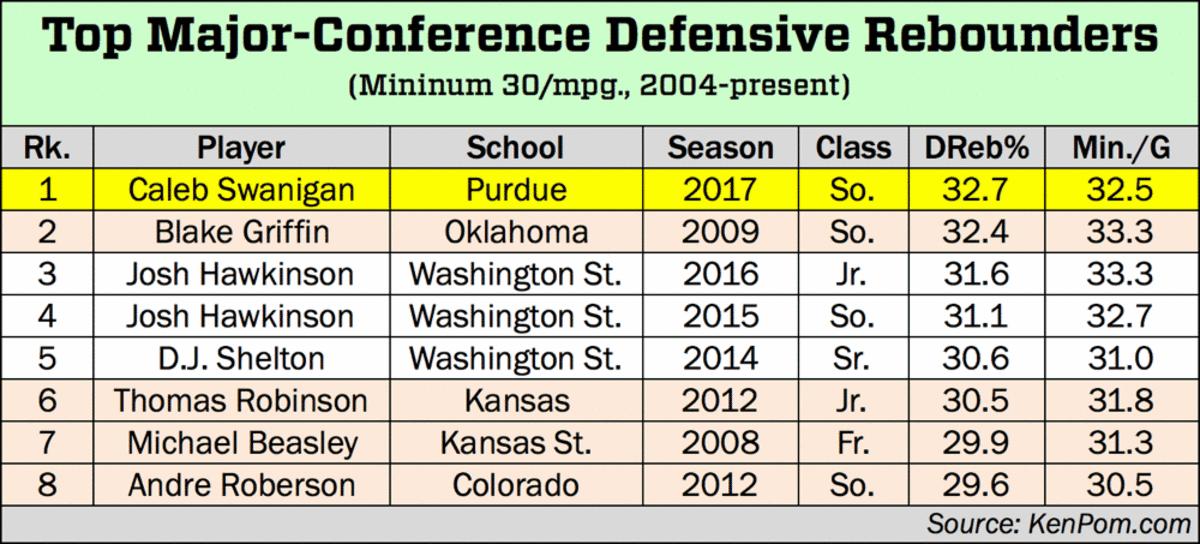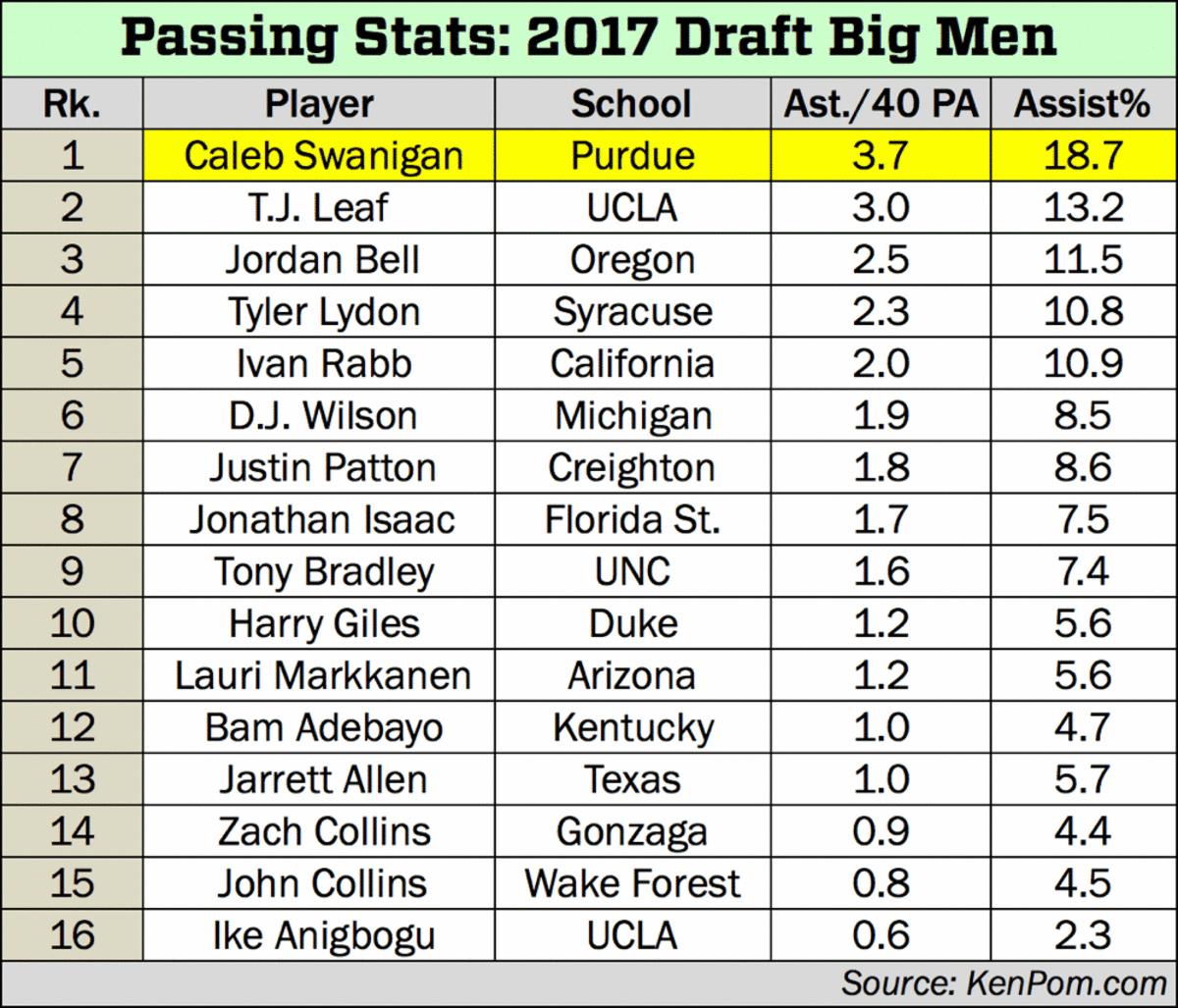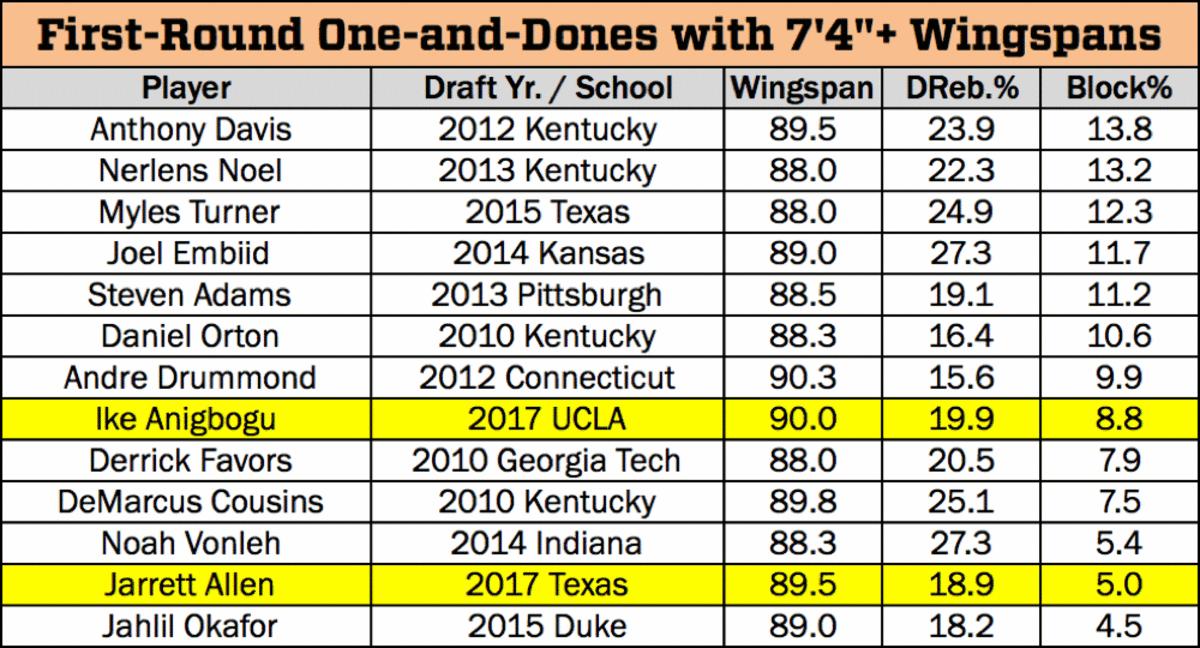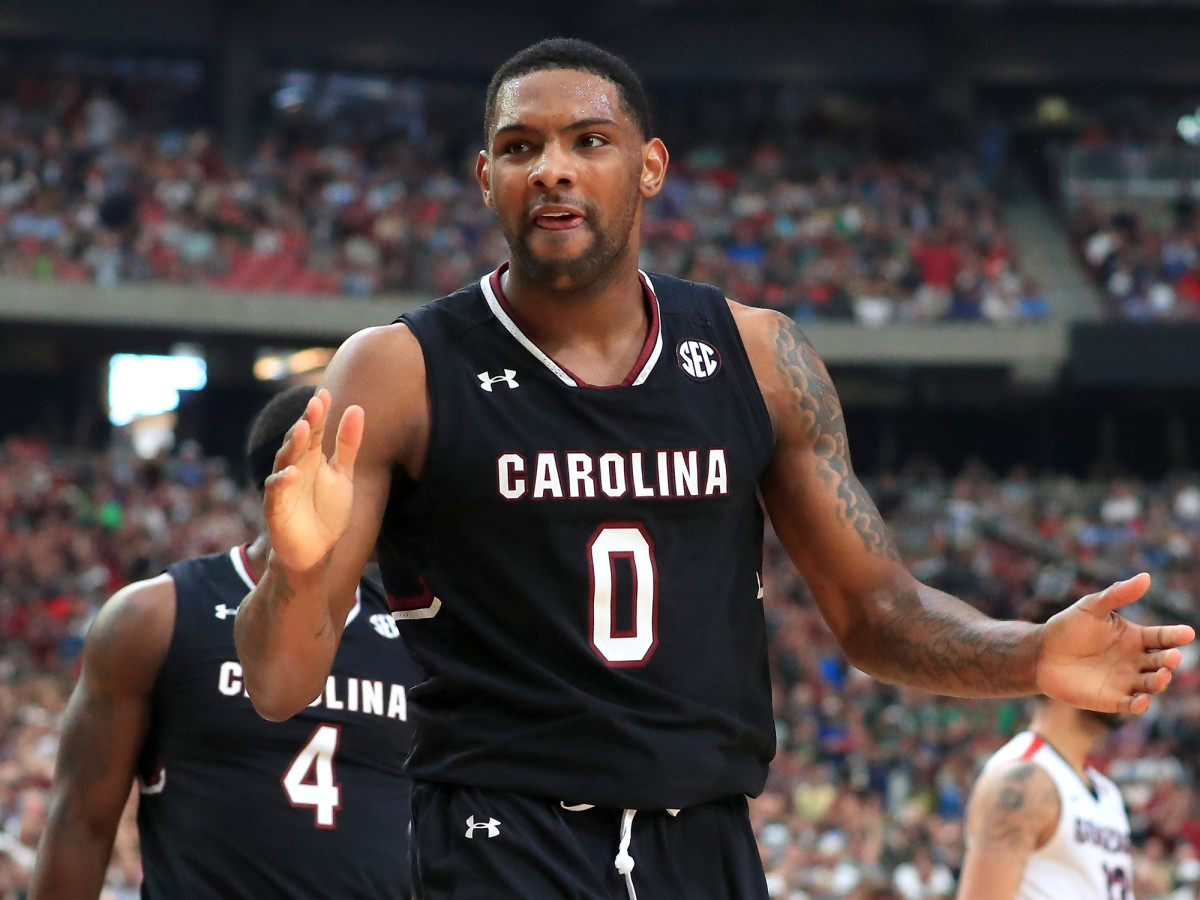Three Thoughts On Non-Lottery NBA Prospects

On draft-day morning, three (deep) thoughts on prospects who'll be available outside the lottery, because the 15 guys at the top of the board have been debated from all possible angles:
1. I understand why Purdue power forward Biggie Swanigan isn't considered one of the elite prospects in this draft. He doesn't rim protect; there are doubts about his ability to defend the NBA pick-and-roll game; and much of his college offense came via back-to-the-basket post play, which is nearing extinction in the NBA. But I still think he could be a valuable rotation player in the league, and see him as one of the better value picks in the 28–40 range. The reasons why have nothing to do with post-up scoring:
NBA Mock Draft 7.0: Final Picks, Rumors And All-Out Chaos
• Rebounding percentage tends to translate all the way up from AAU ball, to college, to the pros, and the 6'9" Swanigan wasn't just a solid rebounder at Purdue; he was the most productive defensive rebounder from a major-conference team in the entire analytics era. Until this season, that title had belonged to Blake Griffin, who grabbed 32.4% of available defensive boards at Oklahoma in his sophomore season of 2008–09. Swanigan's percentage as a Purdue sophomore was 32.7. Here's a chart of the top DReb% guys since 2004, four of whom went on to be first-round picks:

• Ball-moving big men—guys who can make smart passes to the perimeter out of short rolls or post touches—have value in the league, and Swanigan is the best passing big man in this draft. He excelled at drawing in defenses and then feeding Purdue's shooters in the wings or corners, and assisted on 18.9% of his teammates' field goals this season. Biggie's assist rate, as well as his pace-adjusted 3.7 assists per 40 minutes, beat those of any big man projected to go in the first round (see full chart below). There are four power-forward types projected to go ahead of Swangian—Kentucky's Bam Adebayo, Gonzaga's Zach Collins, Wake Forest's John Collins and UCLA's Ike Anigbogu—who didn't even assist on 5% of their teammates' buckets.

• Swanigan also has value as a catch-and-shoot or pick-and-pop three-point option. In his sophomore year with the Boilermakers—which should be evaluated more like a freshman year, since he graduated high school early and was just 19 in 2016–17—he extended his range and made 44.7% of his threes. (The big man regarded as the best shooter in the draft, Arizona's Lauri Markkanen, made 42.3% of his treys, but took nearly double the attempts Swanigan did.)
2. At least two freshman bigs are likely to be first-rounders based more on their physical profiles than their college production. Anigbogu, whose wingspan is 7'6", and Texas's Jarrett Allen, whose wingspan is 7'5", are the Extreme Length Prospects who should be available outside the Lottery, and I'm skeptical that either is worth a pick in the teens.
2017 NBA Draft: Final Top 60 Prospect Rankings
Anigbogu had a limited offensive game at UCLA, with no passing skills and a high turnover rate for someone who wasn't asked to create much offense on his own. His stock was inflated by playing alongside point guard/magician Lonzo Ball, who helped nearly all of his teammates exceed their offensive expectations. Allen has more scoring potential, but he didn't rebound or block shots at a level you'd expect from someone with that much length.
There have been 13 one-and-done big men with wingspans of 7'4" or greater drafted in the first round, according to DraftExpress.com's measurements database. Only Duke's Jahlil Okafor—whose lack of D may be his downfall in the NBA—had a lower combination of freshman-year block and defensive-board rates than Allen did:

3. The prime, two-way prospects—Kansas's Josh Jackson, Kentucky's De'Aaron Fox, Florida State's Jonathan Isaac and Louisville's Donovan Mitchell—will deservedly go off the board in the lottery, but there might be some defense-first gems available in the second round. The Effys, my analytics-based college hoops postseason awards, include honors for defensive impact, and five guys who've been recognized in 2016 or 2017 could be sleeper options.
From the 2016 Effys, which also included future Rookie of the Year candidate Malcolm Brogdon, two excellent wing defenders are in this draft pool: Villanova small forward Josh Hart, who was an incredible, 1–4 switchable defender during the Wildcats' title run, as well as a strong defensive rebounder from the wing; and Northern Iowa's Jeremy Morgan, a 6'5" guard who posted high steal and block rates for multiple seasons, and was regarded as the premier perimeter defender in the Missouri Valley Conference. Hart is a near-lock to be drafted; Morgan is more of a long shot, but he should show up on a Summer League roster even if his name isn't called tonight.

The prospects from the 2017 defensive Effys included two upperclassmen who carried teams to the Final Four and one unheralded West Coast guard. The headliner was Jordan Bell, Oregon's dynamic, 6'9" power forward, who was the only major-conference player this season with a defensive-board percentage above 20.0 (his was 21.8), a block percentage above 8.0 (8.4) and a steal percentage above 2.0 (2.6). He's the draft's best rim protector who can also hold his own on the perimeter.
Another Effy prospect is South Carolina senior Sindarius Thornwell, a guard who defended all five positions, led the SEC in steal percentage and rebounded at a level of a power forward. I think he can make the transition from college star to NBA glue-guy reserve. The last one—a deeper sleeper—is Arizona point guard Kadeem Allen, who hasn't appeared in mock drafts but earned a reputation as the Pac-12's best perimeter defender, and bullied likely No. 1 pick Markelle Fultz into one of his worst games of the season. Allen, like Morgan, should at the very least make a Summer League team and cause problems for some higher-profile guards.
